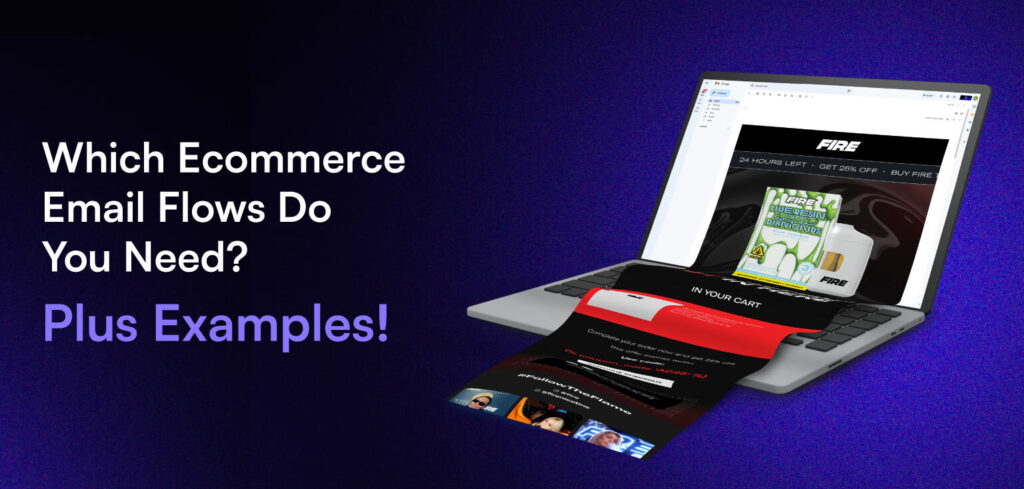Imagine that your ecommerce store never sleeps, constantly engaging customers, recovering abandoned carts, and driving sales—all without you lifting a finger.
This isn’t a far-off dream; it’s the reality of well-crafted email marketing with ecommerce email flows.
Consider them your 24/7 sales team that never calls in sick, never asks for a raise, and consistently delivers results that would make even your best human marketers envious.
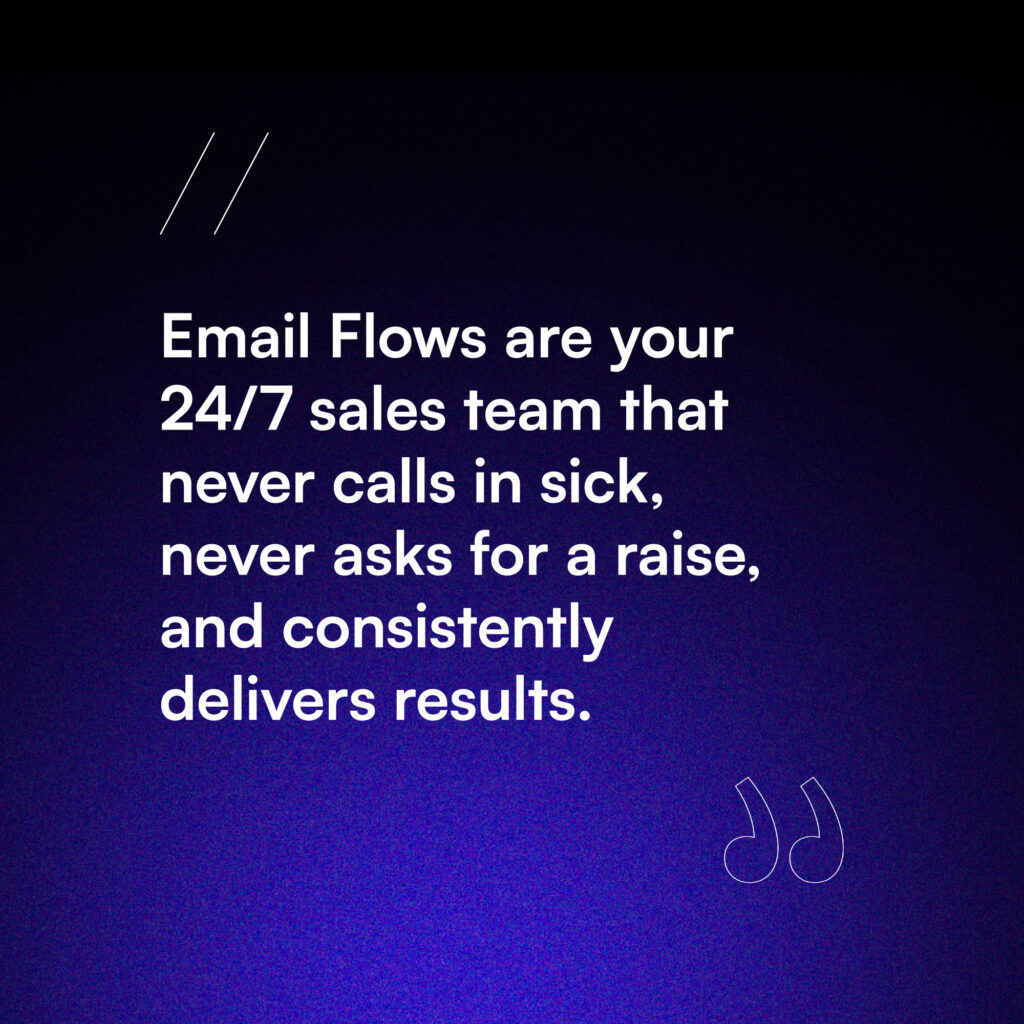
What Are Ecommerce Email Flows?
Email marketing flows are strategically designed sequences of automated emails triggered by specific customer actions or time-based events. They’re the hardworking backbone of your email strategy, nurturing leads, recovering lost sales, and building customer loyalty—all while you focus on other aspects of growing your business.
Getting started with flows might seem like a daunting task. That’s where email marketing platforms come into play. For example, Klaviyo offers a variety of pre-built flow templates to jumpstart your efforts, making it accessible even for beginners.
However, it’s crucial to understand that these templates are intentionally basic. They are a starting point—a canvas for you to customize and optimize based on your brand’s unique voice, customer needs, and business goals.
What Ecommerce Email Flows Should Brand Have?
Let’s dive deep into the essential flows every ecommerce site should implement:
Welcome Flow
First impressions matter, and your welcome flow is often your brand’s first impression. This ecommerce email flow should introduce new subscribers to your brand, set clear expectations for future communications, and often include a special offer to encourage that first purchase.
Key elements to include:
- A warm, personalized greeting
- An introduction to your brand story and values
- Clear explanation of what subscribers can expect (content and frequency)
- A call-to-action, often with a welcome discount or offer
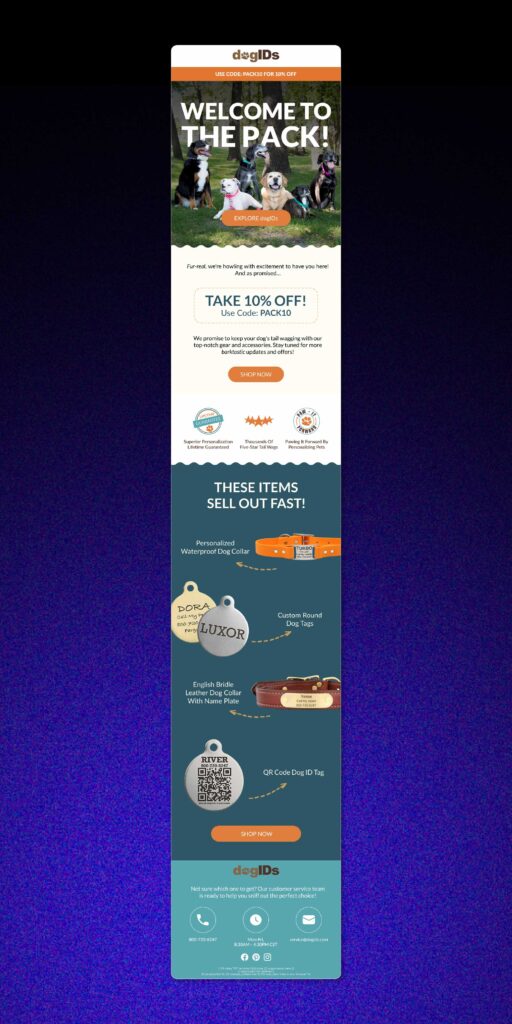
Browse Abandonment Flow
When a customer views a product but doesn’t add it to their cart, a browse abandonment flow can reignite their interest and guide them back to your site. This ecommerce email flow is all about gentle reminders and showcasing value.
Effective strategies include:
- Reminding the customer of the specific products they viewed
- Highlighting key features or benefits of those products
- Showcasing positive reviews or user-generated content
- Offering personalized product recommendations based on browsing history
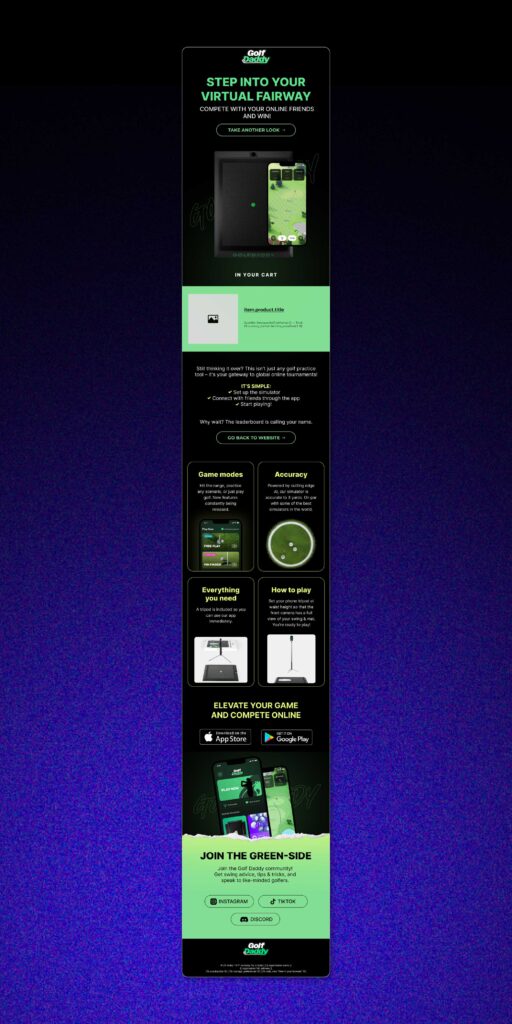
Abandoned Cart Flow
This ecommerce email flow is your safety net for catching potential sales that might otherwise slip away. It reminds customers of items left in their cart and can include incentives to complete the purchase.
A typical abandoned cart flow might include:
- An initial reminder shortly after abandonment (1-2 hours)
- A second email showcasing the items left behind (24 hours later)
- A final email with a sense of urgency or special offer (48-72 hours later)
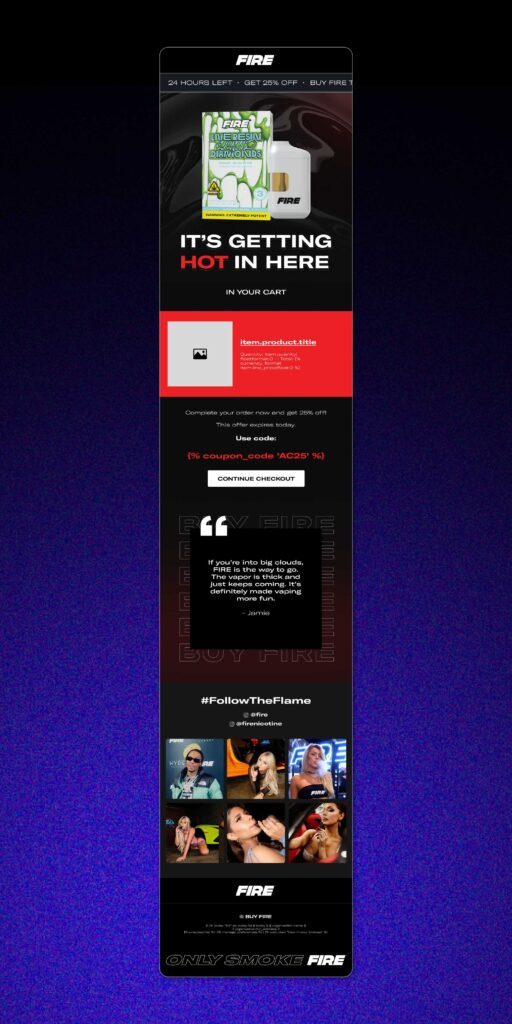
Thank You Flow
After a purchase, a thank you flow shows appreciation, confirms order details, and sets the stage for future engagement. This is your opportunity to start building a long-term relationship.
Consider including:
- A sincere thank you message
- Order confirmation details
- Estimated delivery date
- Tips for using or caring for the purchased product
- An invitation to join your loyalty program or follow on social media
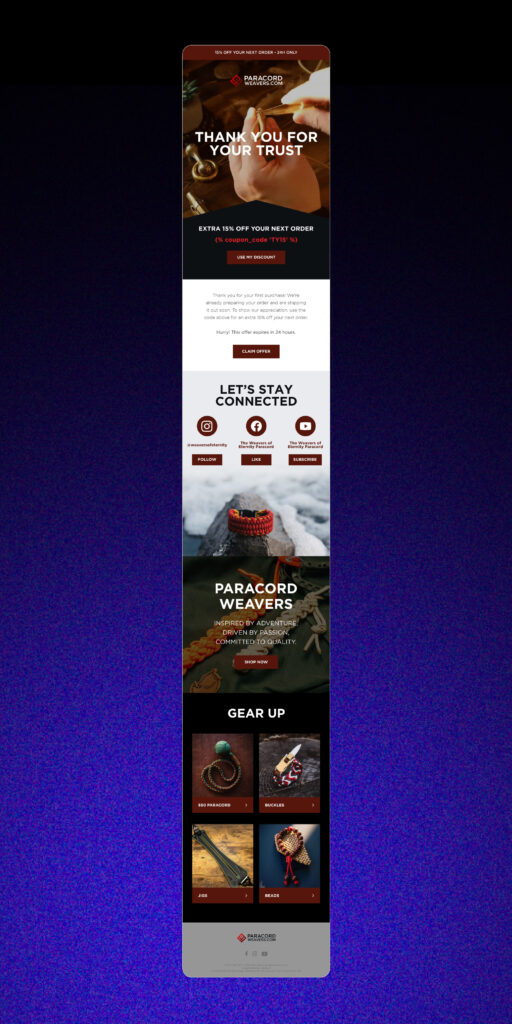
Order Fulfilled / Order Delivered Flow
Keep customers in the loop about their purchase with updates on shipping and delivery. This flow can also include tips on product use or care, enhancing the overall customer experience.
Elements to consider:
- Shipping confirmation with tracking information
- Delivery confirmation
Product care instructions or usage tips - Request for feedback on the shipping/delivery experience
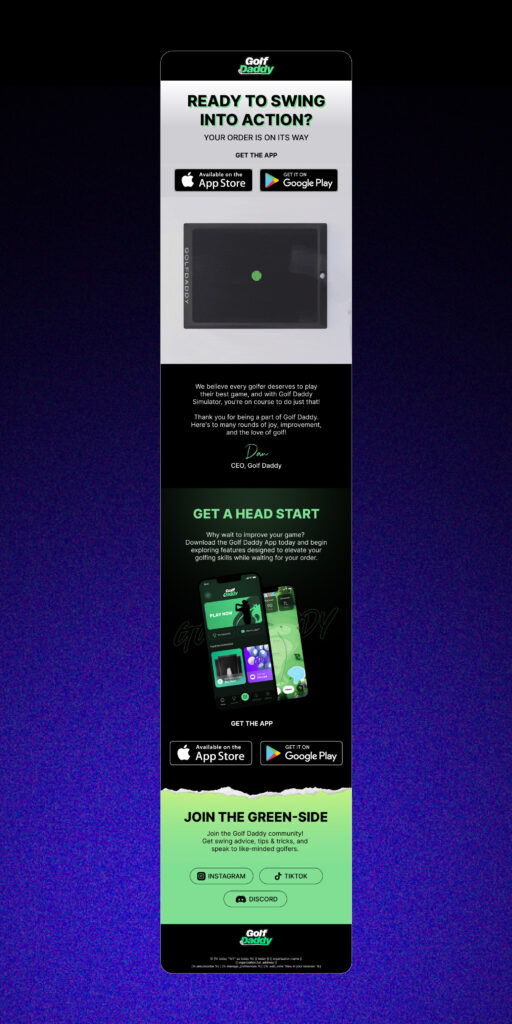
Review Request Flow
Social proof is a powerful tool in ecommerce. This ecommerce email flow encourages customers to share their experiences, boosting your credibility and providing valuable feedback for your business.
Best practices include:
- Timing the request appropriately (after the customer has had time to use the product)
- Making the review process as simple as possible
- Explaining the value of reviews to your business
- Offering an incentive for leaving a review (be careful to not incentivize positive reviews specifically, as this can be seen as unethical)
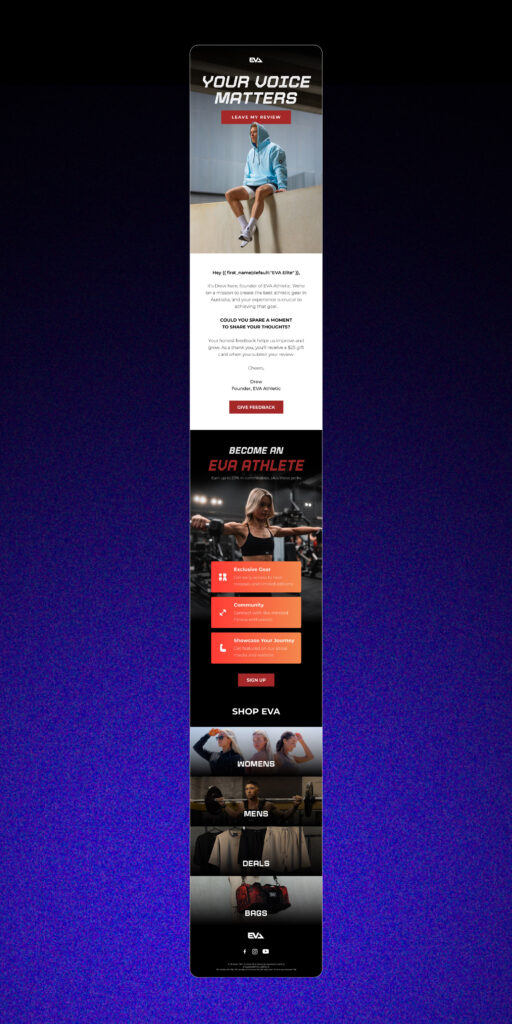
Cross-Sell and Upsell Flow
Based on a customer’s purchase history, this flow suggests complementary or upgraded products, increasing average order value and customer lifetime value.
Strategies to consider:
- Personalized product recommendations based on past purchases
- Educational content about how recommended products work together
- Limited-time offers on complementary products
- Showcase of new or upgraded versions of previously purchased items
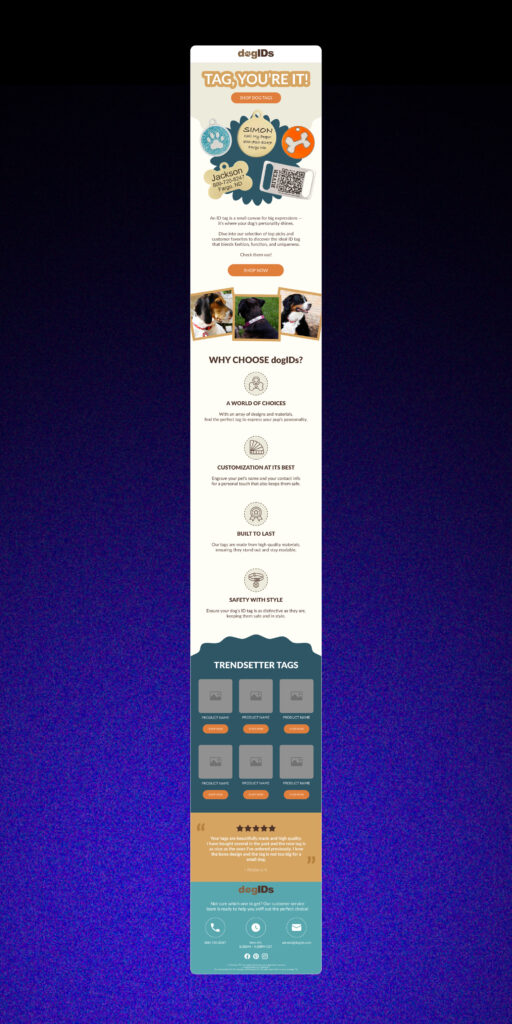
Winback Flow
For customers who haven’t purchased in a while, a winback flow can reignite their interest in your brand and products. This ecommerce email flow is crucial for customer retention and reactivation.
Elements of an effective winback flow:
- A reminder of your brand and past purchases
- Showcase of new products or changes since their last purchase
- A special “we miss you” offer
- Request for feedback on why they haven’t returned
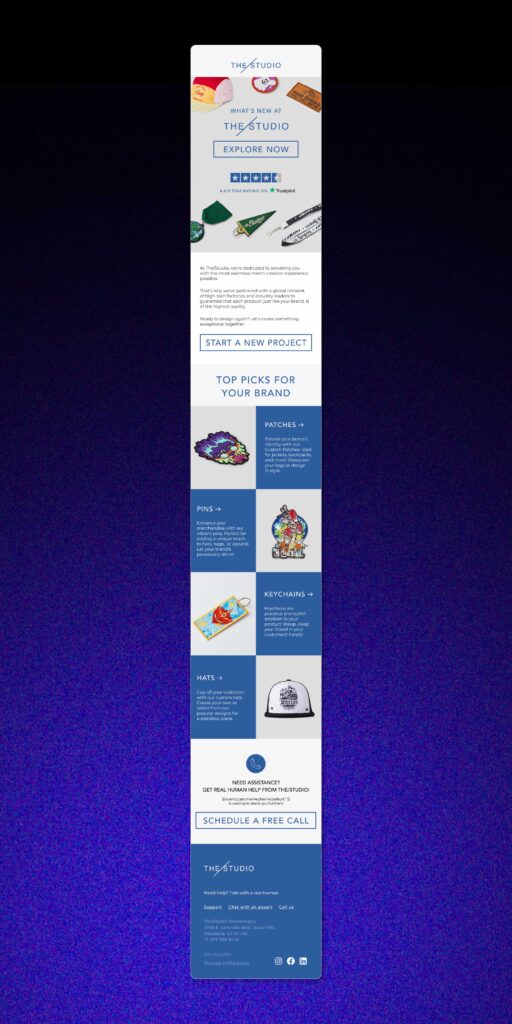
Optional (But Good to Have) Ecommerce Email Flows
While not essential, these flows can take your email marketing to the next level:
- Active on Site Flow: Engage customers while their interest is high, perhaps with a limited-time offer or highlighting new arrivals.
- Anniversary Flow: Celebrate milestones like birthdays or first purchase anniversaries to build emotional connections with your customers.
- Announcement and Special Events Flow: Keep customers informed about sales, new product launches, or special events to drive engagement and sales.
- Survey Flow: Gather valuable customer feedback to improve your offerings and show customers that you value their opinion.
- Back-In-Stock Flow: Alert interested customers when sold-out items are available again, turning potential disappointment into sales opportunities.
- Refer-A-Friend Flow: Leverage your existing customers to attract new ones, offering incentives for successful referrals.
Things to Consider When Setting up Email Marketing Flows
Now that we’ve covered the essential and optional email flows, let’s dive into the crucial elements that can make or break your email marketing strategy:
List & Segmentation
Not all customers are the same, and your email flows should reflect that. Use your email service provider’s segmentation tools to tailor your flows based on customer behavior, preferences, or demographics. For example, you might have different welcome flows for customers who signed up through different channels, or separate cross-sell flows for high-value versus occasional customers.
A/B Tests
Continuous improvement is key in email marketing. Regularly test different elements of your flows like subject lines, content, offers, or send times. Remember to test one element at a time for clear results, and always have a specific goal in mind for each test.
Sending Schedule
The timing of your emails can significantly impact their effectiveness. Consider:
- Intervals between emails in a flow
- Time of day
- Days of the week
Test different options to find what works best for your specific audience. Remember, optimal send times can vary based on factors like your industry, target demographic, and the nature of the email itself.
SMS Flows
Don’t forget about text messaging. SMS can be particularly effective for time-sensitive communications like shipping updates or flash sales.
Examples of Effective Ecommerce Email Flows
Let’s look at a couple of real-world examples:
Pink Clover's Welcome Flow
Pink Clover, a women-owned floral business in Los Angeles, with the help of 11 Agency, has crafted a welcoming and engaging three-part welcome flow that effectively introduces new subscribers to their brand and encourages a first purchase. Here’s how it unfolds:
Email 1: The Warm Welcome (Immediate)
Subject Line: Welcome to Pink Clover 🌸
Preview Text: Here’s your 10% Discount Code
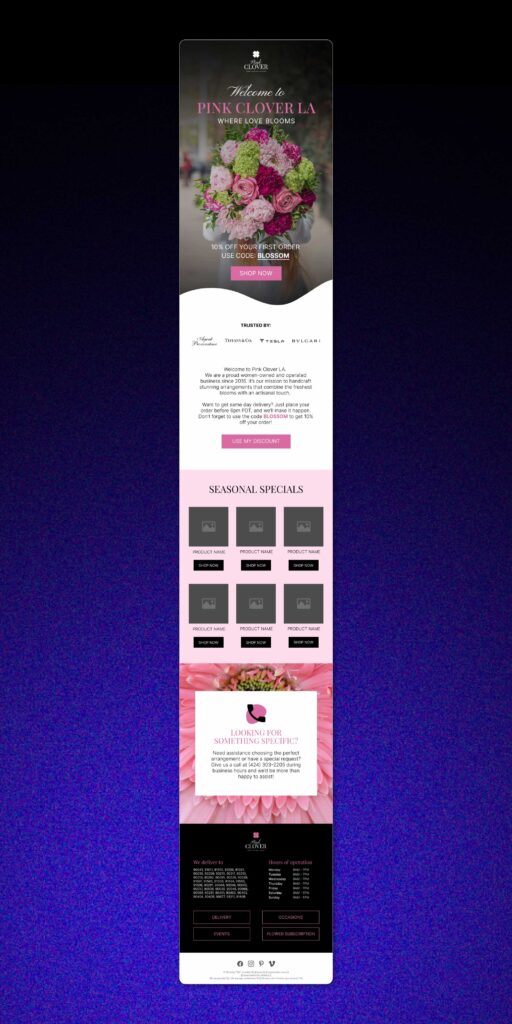
Key elements:
- Immediate warm welcome with a prominent 10% off discount code (BLOSSOM)
- Brief introduction to the brand, highlighting that they’re women-owned and operated since 2016
- Emphasis on same-day delivery for orders placed before 6 PM PDT
- Showcase of seasonal specials with a dynamic product block
Clear contact information for customer assistance
What makes it effective:
- Immediate value offer with the discount code
- Clear brand positioning and unique selling points (women-owned, artisanal touch, same-day delivery)
- Easy-to-use discount code creates urgency and encourages immediate action
Email 2: Social Proof (48 hours later)
Subject Line: We deliver smiles 🥰
Preview Text: Last 48 hours to save 10%!
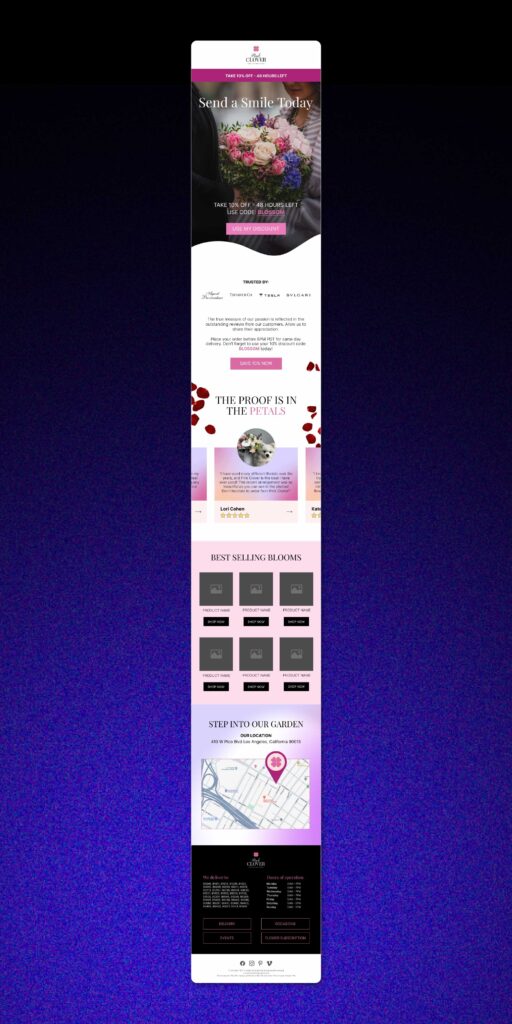
Key elements:
- Reminder of the 10% discount with 48-hour time limit
- Focus on customer testimonials (“The Proof is in the Petals”)
- Showcase of best-selling products
- Reiteration of same-day delivery option and discount code
What makes it effective:
- Use of social proof to build trust and credibility
- Creating urgency with the 48-hour countdown on the discount
- Highlighting best-sellers to guide purchasing decisions
Email 3: Last Chance (72 hours after initial welcome)
Subject Line: Your 10% Discount is Expiring
Preview Text: Use it today!
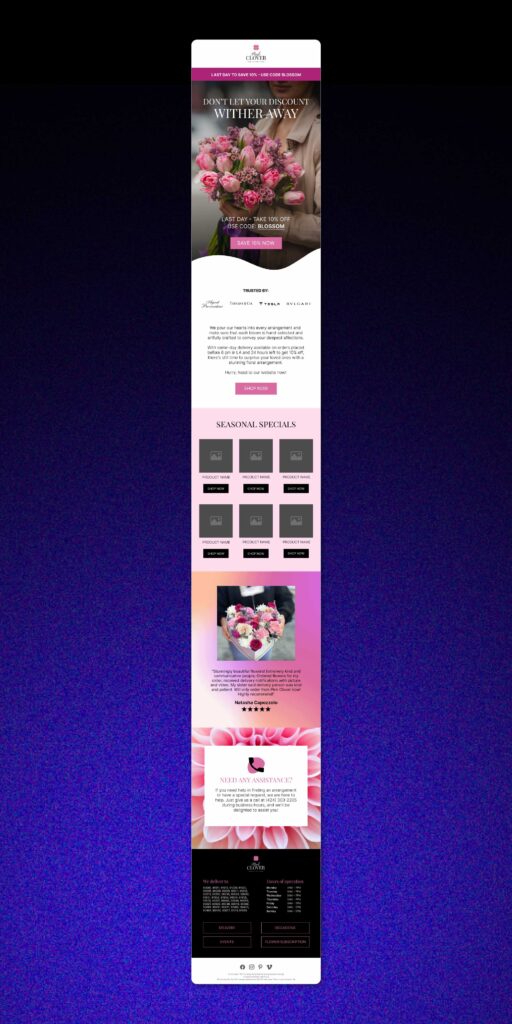
Key elements:
- Final reminder of the expiring 10% discount
- Emphasis on the care and artistry in each arrangement
- Another showcase of seasonal specials
- Inclusion of more customer testimonials with images
What makes it effective:
- Creates a final sense of urgency to use the discount
- Reinforces the brand’s commitment to quality and artistry
- Uses visual social proof with customer testimonials and images
By following up the initial welcome with two strategically timed reminder emails, Pink Clover maximizes the chance of converting new subscribers into first-time customers. The flow provides value with the discount code, builds trust through testimonials, and creates urgency with the time-limited offer, all while introducing the brand and its unique offerings.
This welcome flow exemplifies how even a small, local business can create a professional, engaging email sequence that rivals those of larger corporations. It’s a perfect example of how to make a strong first impression and set the stage for a lasting customer relationship.
So, what now?
Remember, the key to successful email flows is continuous optimization. Start with the essential flows, then gradually expand and refine your strategy based on performance data and customer feedback.
Pay close attention to metrics like open rates, click-through rates, and conversion rates for each flow, and don’t be afraid to make adjustments based on what the data tells you.
Before you know it, you’ll have a suite of email flows that not only boost your bottom line but also create meaningful, lasting connections with your customers.
Remember, the key to successful email flows is continuous optimization. Start with the essential flows, then gradually expand and refine your strategy based on performance data and customer feedback.
Pay close attention to metrics like open rates, click-through rates, and conversion rates for each flow, and don’t be afraid to make adjustments based on what the data tells you.
Before you know it, you’ll have a suite of email flows that not only boost your bottom line but also create meaningful, lasting connections with your customers.
Read this next: List Growth Rate: What Is It And How Can You Maximize It?

